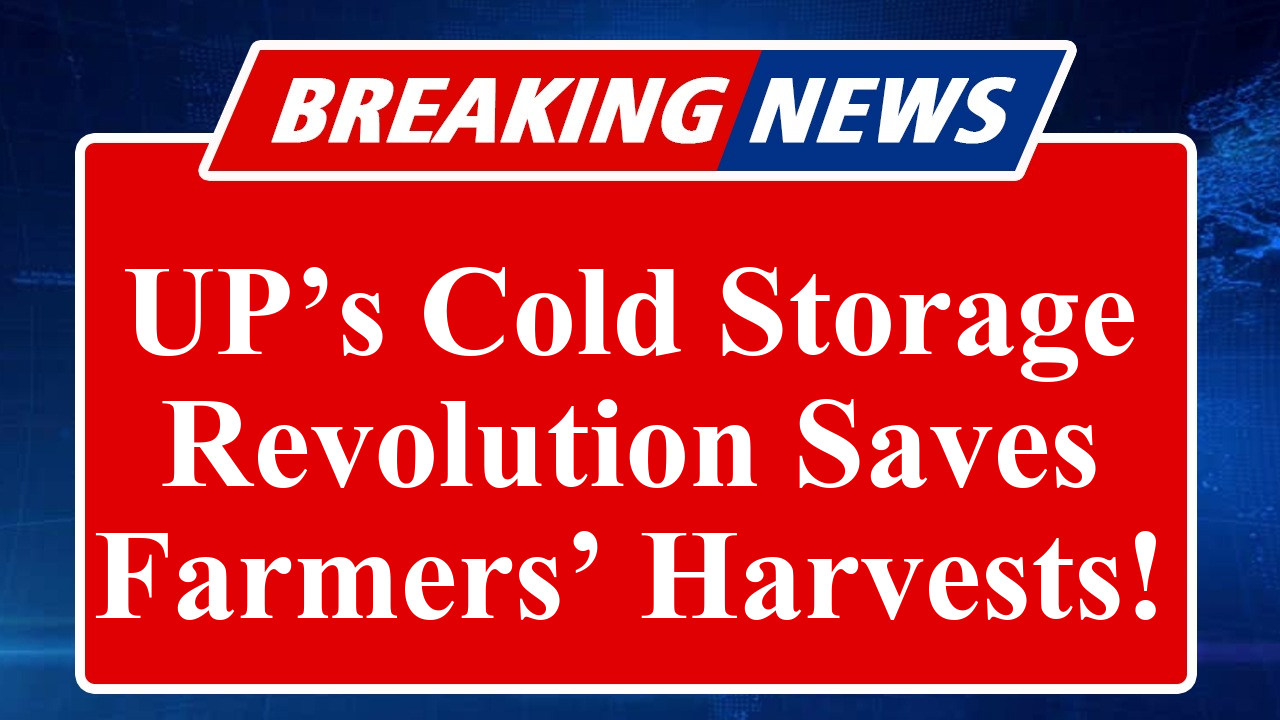Uttar Pradesh is revolutionizing its agricultural landscape with new cold storage units to curb post-harvest losses. These facilities aim to enhance farmers’ income by preserving produce and ensuring better market prices. Supported by government schemes, the initiative addresses infrastructure gaps, promotes sustainability, and strengthens the food supply chain, benefiting millions of farmers across the state.
Uttar Pradesh Enhances Agricultural Infrastructure with Cold Storage Expansion
Uttar Pradesh, India’s agricultural powerhouse, is witnessing a significant push towards reducing post-harvest losses through the establishment of new cold storage units. As of August 2025, the state government has prioritized bolstering cold chain infrastructure to support its vast farming community, which contributes significantly to India’s food production. With agriculture employing over 50% of UP’s workforce, these facilities are a game-changer for small and marginal farmers.
Recent data highlights the urgency of this initiative. India loses approximately 40% of its fruits and vegetables annually due to inadequate storage, costing farmers an estimated ₹92,651 crore. In Uttar Pradesh, where horticulture thrives, the lack of accessible cold storage has long forced farmers to sell perishable produce at throwaway prices during peak harvest seasons. The new units aim to address this by extending the shelf life of crops like potatoes, onions, tomatoes, and fruits, enabling farmers to store produce and sell when market prices are favorable.
The state’s efforts align with central government schemes like the Pradhan Mantri Kisan Sampada Yojana (PMKSY) and the Mission for Integrated Development of Horticulture (MIDH). Under these, financial assistance is provided for constructing cold storage units, with subsidies of up to 35% in general areas and 50% in hilly or scheduled areas. In Uttar Pradesh, the focus is on creating farm-gate-level facilities to minimize transport losses and ensure accessibility for smallholder farmers. The National Horticulture Board (NHB) supports units with capacities between 1,000 and 10,000 metric tonnes, with special provisions for the northeastern regions.
A notable example is the recent collaboration between the UP government and private enterprises to establish energy-efficient cold storage units. These facilities incorporate advanced technologies like thermal batteries, which store energy as ice to provide uninterrupted cooling even during power outages—a common challenge in rural UP. For instance, a pilot project in Haryana, similar to UP’s model, demonstrated that such innovations could save farmers up to $5,000 annually in fuel costs while reducing CO2 emissions by 15 tonnes per unit.
However, challenges persist. A 2024 report by the Development Intelligence Unit revealed that 69% of marginal farmers in India lack cold storage within a 10 km radius, and 10% are unaware of such facilities. In UP, the government is addressing this through awareness campaigns and partnerships with Farmer Producer Organizations (FPOs) and cooperatives. The state’s cold storage capacity, currently part of India’s 37.4 million metric tonne network, is projected to grow by 8.2% by 2026, driven by these initiatives.
Private sector involvement is also pivotal. Companies like Natural Storage Solutions Pvt Ltd are providing affordable, scalable solutions tailored for UP’s farmers. For example, zero-energy Subjee Coolers, which require only 20 liters of water daily, are being piloted in eastern UP to store non-tuber crops for up to six days without electricity. Such innovations are critical in a state where 68% of cold storage is used for potatoes, leaving limited space for multi-commodity storage.
The economic impact is substantial. A well-managed cold storage unit can yield a 20-30% return on investment, with break-even points achieved within 3-5 years. For farmers, this translates to reduced wastage, higher profits, and greater bargaining power in markets. The state’s focus on integrating cold chains with food processing units under PMKSY is expected to benefit 28 lakh farmers nationwide by 2026, with UP leading the charge.
Despite these advancements, gaps remain. Posts on X highlight that 101 of Bihar’s 303 cold storage units are non-functional due to poor transport infrastructure, a concern UP must address to maximize impact. Additionally, high initial costs and seasonal demand fluctuations pose challenges. The UP government is countering these by offering loans, subsidies, and technical support to entrepreneurs and cooperatives setting up units.
The expansion of cold storage in Uttar Pradesh is not just about preserving produce—it’s about empowering farmers, stabilizing food prices, and strengthening food security. As these units become operational, they promise to transform the state’s agricultural economy, ensuring that farmers reap the full benefits of their labor.
Disclaimer: This article is based on recent news, reports, and government sources, including data from the Ministry of Agriculture & Farmers Welfare, NABARD, and posts on X. Information is accurate as of August 6, 2025, and subject to change. Readers are advised to verify details through official channels.

